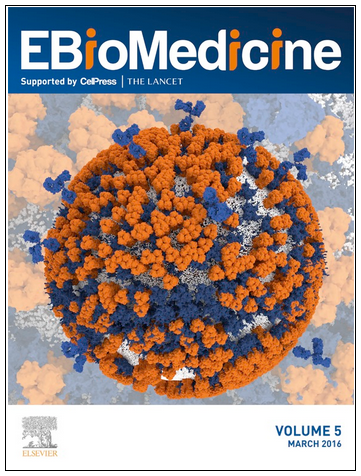Questo lavoro è frutto della collaborazione della scuola di retina medica di Boston e di Creta. Riporta i risultati molto interessanti di un approccio terapeutico farmacologico alle drusen. Queste sono il segno precoce della maculopatia senile e predispongono a ulteriori peggioramenti.
Nel lavoro sono stati seguiti per circa un anno 23 pazienti affetti da soft drusen, trattati con dosi molto elevate di atorvastatina: 80 mg al giorno, circa 4 volte le dosi indicate per le alte colesterolemie.
A distanza di un anno su 10 pazienti su 23 le drusen erano regredite e nessun paziente aveva mostrato segni di progressione degenerativa.
I risultati appaiono molto interessanti e sono stati accolti con molto interesse dalla comunità scientifica, con avvio di ulteriori studi in diversi centri per confermare l’efficacia dell’indicazione terapeutica.
Demetrios G. Vavvas, Anthony B. Daniels, Zoi G. Kapsala, Jeremy W. Goldfarb, Emmanuel Ganotakis, John I. Loewenstein, Lucy H. Young, Evangelos S. Gragoudas, Dean Eliott, Ivana K. Kim, Miltiadis K. Tsilimbaris, Joan W. Miller
Retina Service, Department of Ophthalmology, Mass. Eye and Ear Infirmary, Harvard Medical School, Boston, MA, USA
Retina Service, Department of Ophthalmology, University of Crete, Heraklion, Crete, Greece
EBioMedicine
March 2016 – Volume 5, Pages 198–203
Abstract High dose lipophilic statin administration was associated with regression of large soft drusen and vision gain in 10/23 AMD patients. Duration of treatment before a positive response was observed was usually 1–1.5 years. Patients on high-dose statin appeared to be protected from progression to “wet” neovascular-AMD.
There is a lack of effective therapies for dry age-related macular degeneration (AMD), one of the leading causes of blindness affecting millions. Although AMD shares similarities with atherosclerosis, prior studies on statins and AMD have failed to show improvement. A limitation of these studies has been the heterogeneity of AMD disease and the lack of standardization in statin dosage. Here, we present for the first time evidence that treatment with high-dose atorvastatin (80 mg) is associated with regression of lipid deposits and improvement in visual acuity, without atrophy or neovascularization, in high-risk AMD patients.
Design Pilot multicenter open-label prospective clinical study of 26 patients with diagnosis of AMD and the presence of many large, soft drusenoid deposits. Patients received 80 mg of atorvastatin daily and were monitored at baseline and every 3 months with complete ophthalmologic exam, best corrected visual acuity (VA), fundus photographs, optical coherence tomography (OCT), and blood work (AST, ALT, CPK, total cholesterol, TSH, creatinine, as well as a pregnancy test for premenopausal women).
Results Twenty-three subjects completed a minimum follow-up of 12 months. High-dose atorvastatin resulted in regression of drusen deposits associated with vision gain (+3.3 letters, p = 0.06) in 10 patients. No subjects progressed to advanced neovascular AMD.
Conclusions High-dose statins may result in resolution of drusenoid pigment epithelial detachments (PEDs) and improvement in VA, without atrophy or neovascularization in a high-risk subgroup of AMD patients. Confirmation from larger studies is warranted

 Regression of Some High-risk Features of Age-related Macular Degeneration (AMD) in Patients Receiving Intensive Statin Treatment
Regression of Some High-risk Features of Age-related Macular Degeneration (AMD) in Patients Receiving Intensive Statin Treatment